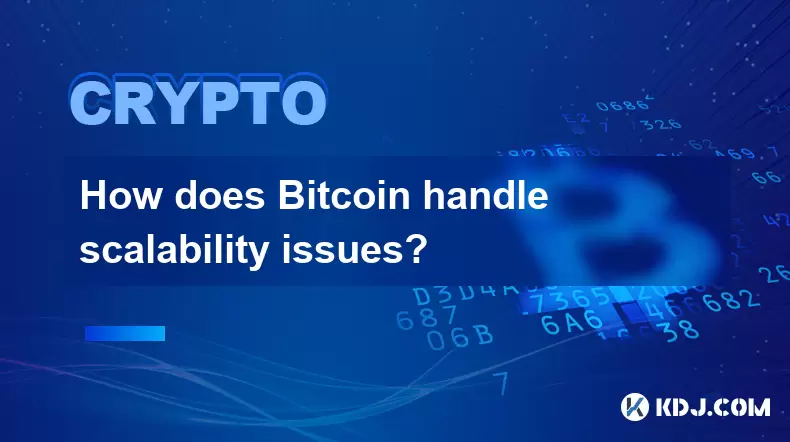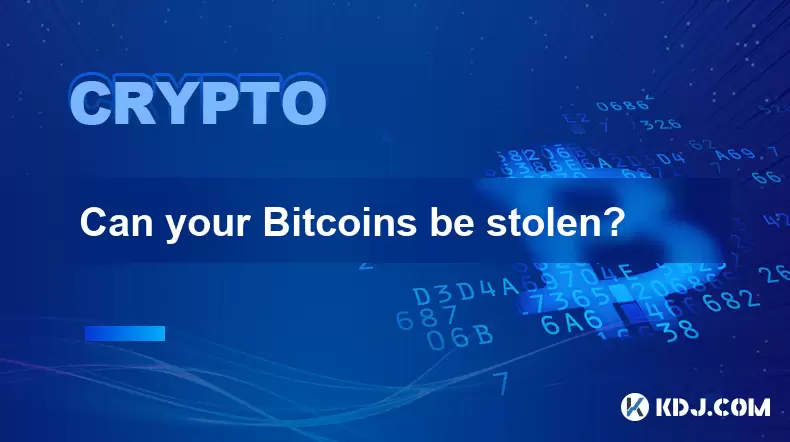-
 Bitcoin
Bitcoin $115000
0.88% -
 Ethereum
Ethereum $3727
2.86% -
 XRP
XRP $3.001
2.15% -
 Tether USDt
Tether USDt $1.000
0.03% -
 BNB
BNB $765.7
0.59% -
 Solana
Solana $169.5
3.52% -
 USDC
USDC $0.9999
0.00% -
 TRON
TRON $0.3391
1.24% -
 Dogecoin
Dogecoin $0.2059
2.68% -
 Cardano
Cardano $0.7418
2.24% -
 Hyperliquid
Hyperliquid $37.92
1.29% -
 Stellar
Stellar $0.4017
2.54% -
 Sui
Sui $3.508
2.67% -
 Chainlink
Chainlink $16.87
2.81% -
 Bitcoin Cash
Bitcoin Cash $569.4
2.08% -
 Hedera
Hedera $0.2472
0.22% -
 Ethena USDe
Ethena USDe $1.001
0.01% -
 Avalanche
Avalanche $22.29
1.22% -
 Litecoin
Litecoin $118.0
0.74% -
 UNUS SED LEO
UNUS SED LEO $8.924
-0.75% -
 Toncoin
Toncoin $3.236
1.65% -
 Shiba Inu
Shiba Inu $0.00001238
1.79% -
 Uniswap
Uniswap $9.827
3.02% -
 Polkadot
Polkadot $3.684
1.92% -
 Dai
Dai $1.000
0.01% -
 Monero
Monero $283.0
-2.73% -
 Bitget Token
Bitget Token $4.362
0.47% -
 Cronos
Cronos $0.1458
4.97% -
 Pepe
Pepe $0.00001054
2.58% -
 Ethena
Ethena $0.6238
9.53%
BTC thirty-minute cycle iceberg order identification tactics
Iceberg orders in BTC trading can be detected using order book analysis and volume profiles within the thirty-minute cycle, aiding in strategic trading decisions.
Jun 03, 2025 at 09:14 pm

Introduction to Iceberg Orders in the BTC Market
In the world of cryptocurrency trading, understanding the mechanics of order types is crucial for making informed decisions. One such order type that traders often encounter is the iceberg order. Iceberg orders are large orders that are broken down into smaller, visible portions to disguise the true size of the order from other market participants. This tactic is used to prevent large orders from impacting the market price significantly. In the context of the BTC thirty-minute cycle, identifying iceberg orders can provide traders with valuable insights into potential market movements.
What is a Thirty-Minute Cycle in BTC Trading?
A thirty-minute cycle in BTC trading refers to the time frame within which traders analyze market data to make trading decisions. This cycle is particularly useful for identifying short-term trends and patterns. Within these thirty-minute windows, traders look for specific indicators and order types, such as iceberg orders, to gauge the market's direction. Understanding the nuances of these cycles can help traders anticipate price movements and adjust their strategies accordingly.
Identifying Iceberg Orders: Key Indicators
Identifying iceberg orders within the BTC thirty-minute cycle requires a keen eye for certain indicators. One of the primary indicators is the presence of repeated order sizes at the same price level. If you notice that a specific order size keeps appearing and disappearing at a particular price point, it could be an indication of an iceberg order. Additionally, unusual trading volume at specific price levels without corresponding price movements can also suggest the presence of iceberg orders.
Tools and Techniques for Iceberg Order Detection
To effectively identify iceberg orders, traders can use a variety of tools and techniques. Order book analysis is one of the most straightforward methods. By closely monitoring the order book, traders can observe patterns in the visible orders and infer the presence of larger, hidden orders. Volume profile indicators can also be useful, as they highlight areas of high trading volume that may indicate iceberg orders. Additionally, trading software that provides real-time data and advanced charting capabilities can help traders spot these orders more efficiently.
Step-by-Step Guide to Detecting Iceberg Orders in the BTC Thirty-Minute Cycle
Detecting iceberg orders within the BTC thirty-minute cycle involves a systematic approach. Here's a detailed step-by-step guide:
Choose the Right Trading Platform: Select a platform that offers real-time data and advanced charting tools. Platforms like Binance or Coinbase Pro are popular choices among crypto traders.
Set Up Your Chart: Open a thirty-minute chart for BTC. Ensure that you have access to the order book and volume profile indicators.
Monitor the Order Book: Keep an eye on the order book for repeated order sizes at specific price levels. If you see the same order size appearing and disappearing, it might be an iceberg order.
Analyze Volume Profiles: Use volume profile indicators to identify areas of high trading volume. Unusual volume spikes at specific price levels without corresponding price movements can indicate iceberg orders.
Confirm with Price Action: Look for price action that suggests the presence of large, hidden orders. For example, if the price repeatedly bounces off a certain level without breaking through, it could be due to an iceberg order at that level.
Take Action: Once you've identified a potential iceberg order, adjust your trading strategy accordingly. You might decide to enter a position in anticipation of the market moving in a certain direction due to the iceberg order's influence.
Practical Example of Identifying an Iceberg Order
To illustrate how to identify an iceberg order within the BTC thirty-minute cycle, let's consider a hypothetical scenario. Suppose you're monitoring the BTC/USD pair on a thirty-minute chart. You notice that there's a consistent order size of 10 BTC at the $50,000 price level, which appears and disappears multiple times within the cycle. Additionally, the volume profile shows a significant spike at this price level, but the price remains stable. This could indicate an iceberg order at $50,000. By recognizing this, you might decide to place a buy order slightly below this level, anticipating that the iceberg order will continue to support the price.
The Importance of Timing and Patience
Timing and patience are critical when identifying iceberg orders within the BTC thirty-minute cycle. It's important to spend enough time observing the market before making any trading decisions. Rushing into a trade based on a suspected iceberg order can lead to losses if the order turns out to be something else. Patience allows traders to gather more data and confirm their suspicions before acting.
Risks and Considerations
While identifying iceberg orders can be a powerful tool for traders, it's not without risks. False positives are a common issue, where traders might mistake regular market activity for iceberg orders. Additionally, market volatility can make it challenging to accurately identify these orders. Traders should always use iceberg order identification as one part of a broader trading strategy and never rely on it exclusively.
Frequently Asked Questions
Q: Can iceberg orders be used to manipulate the market?
A: Iceberg orders themselves are not inherently manipulative, but they can be used as part of larger strategies that might aim to influence market prices. Traders should be aware of this possibility and use other indicators to confirm their trading decisions.
Q: How do iceberg orders affect market liquidity?
A: Iceberg orders can improve market liquidity by breaking down large orders into smaller, more digestible portions. However, if not managed properly, they can also lead to sudden price movements when the full size of the order is revealed.
Q: Are iceberg orders more common in certain market conditions?
A: Iceberg orders are often more prevalent in highly liquid markets where large trades are more common. They can be used in both bullish and bearish market conditions, depending on the trader's strategy.
Q: Can retail traders use iceberg orders?
A: While iceberg orders are typically used by institutional traders, some retail trading platforms offer the functionality to place iceberg orders. However, retail traders should be cautious and fully understand the implications before using such orders.
Disclaimer:info@kdj.com
The information provided is not trading advice. kdj.com does not assume any responsibility for any investments made based on the information provided in this article. Cryptocurrencies are highly volatile and it is highly recommended that you invest with caution after thorough research!
If you believe that the content used on this website infringes your copyright, please contact us immediately (info@kdj.com) and we will delete it promptly.
- IREN Overtakes: A New King in the Bitcoin Miner Hashrate Race?
- 2025-08-07 16:31:29
- Memecoins Mania: Whales Eye Pepe Dollar (PEPD) as Bonk Cools Off, While MoonBull Hogs the Spotlight!
- 2025-08-07 16:51:17
- Unilabs, PEPE, and Investment Risk: Navigating the Crypto Hype
- 2025-08-07 16:31:29
- Meme Coin Mania: Rug Pulls, CZ-Inspired Tokens, and the Wild West of Crypto
- 2025-08-07 16:57:14
- HashFlare Founders Face the Music: Jail Time Looms?
- 2025-08-07 14:30:12
- Pepeto's Pounce: Meme Coin Mania Meets Blockchain Infrastructure
- 2025-08-07 15:10:12
Related knowledge

Can the Bitcoin protocol be changed?
Aug 07,2025 at 01:16pm
Understanding the Bitcoin ProtocolThe Bitcoin protocol is the foundational set of rules that govern how the Bitcoin network operates. It defines every...

How does Bitcoin handle scalability issues?
Aug 07,2025 at 10:54am
Understanding Bitcoin’s Scalability ChallengeBitcoin’s design prioritizes decentralization, security, and immutability, but these principles come with...

Do you need to understand technology to use Bitcoin?
Aug 07,2025 at 06:17am
Understanding the Basics of BitcoinTo engage with Bitcoin, one does not need a deep understanding of the underlying technology, much like how individu...

Can your Bitcoins be stolen?
Aug 07,2025 at 03:28am
Understanding the Security of Bitcoin OwnershipThe decentralized nature of Bitcoin means that no central authority controls the network, placing the r...

How does Bitcoin compare to gold?
Aug 07,2025 at 03:18am
Historical Context and Origins of Bitcoin and GoldUnderstanding the comparison between Bitcoin and gold begins with their origins and historical roles...

Can you lose money with Bitcoin?
Aug 07,2025 at 07:49am
Understanding the Volatility of BitcoinBitcoin is known for its extreme price volatility, which is one of the primary reasons investors can lose money...

Can the Bitcoin protocol be changed?
Aug 07,2025 at 01:16pm
Understanding the Bitcoin ProtocolThe Bitcoin protocol is the foundational set of rules that govern how the Bitcoin network operates. It defines every...

How does Bitcoin handle scalability issues?
Aug 07,2025 at 10:54am
Understanding Bitcoin’s Scalability ChallengeBitcoin’s design prioritizes decentralization, security, and immutability, but these principles come with...

Do you need to understand technology to use Bitcoin?
Aug 07,2025 at 06:17am
Understanding the Basics of BitcoinTo engage with Bitcoin, one does not need a deep understanding of the underlying technology, much like how individu...

Can your Bitcoins be stolen?
Aug 07,2025 at 03:28am
Understanding the Security of Bitcoin OwnershipThe decentralized nature of Bitcoin means that no central authority controls the network, placing the r...

How does Bitcoin compare to gold?
Aug 07,2025 at 03:18am
Historical Context and Origins of Bitcoin and GoldUnderstanding the comparison between Bitcoin and gold begins with their origins and historical roles...

Can you lose money with Bitcoin?
Aug 07,2025 at 07:49am
Understanding the Volatility of BitcoinBitcoin is known for its extreme price volatility, which is one of the primary reasons investors can lose money...
See all articles

























































































